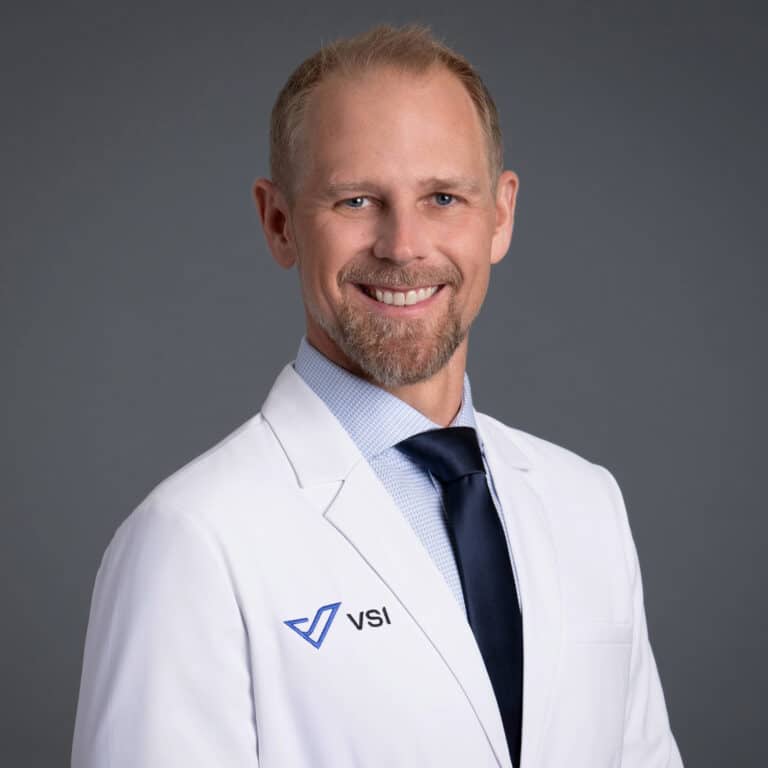
Celebrating an Athlete Who Got ‘Back’ in Warrior Mode
Heather has been a life-long athlete, but when she first came to visit Dr. Good, she was experiencing debilitating pain, had been for years and she was frustrated.
“I was 22 years old when the pain started,” she told me. It began as a minor inconvenience, a nagging ache, but over time, it developed into something larger that she could no longer control. She tried everything to treat the two herniated discs. She saw doctors, nurse practitioners, sought out physical therapy, had x-rays and MRI’s, tried epidurals, bilateral nerve blocks, traction, dry needling, TENS therapy, and a series of other pain management treatments.
WTOP Interview, Part 1
“At one point I was told my core was so strong that perhaps something else was wrong. Other times, I was told that I had the back of an 80-year-old. Nothing worked,” Wright explained.
Heather found her way to VSI 11 years after her pain started and she and Dr. Good found a solution. It was so successful, Heather’s now back to the competitive sports she adores. In fact, this week she competes in the Invictus Games in The Netherlands. The 37-year-old is one of only 15 people in the US Air Force chosen for this team and one of 62 athletes from all branches on Team US. Miraculously, Heather’s taking on the challenge just months after her back surgery. She is such an inspiration and I couldn’t be cheering her on in a bigger way. Here’s her amazing story.
Listen to the Podcast

When she was 33, I diagnosed Heather with retrolisthesis – backward slippage of the vertebrae – and radiculopathy which is compressed nerves resulting in pain, numbness, tingling, and/or weakness. Retrolisthesis is an instability in the spine and an assault on the discs but with that diagnosis, we could chart the path forward.
Heather and I agreed we would start treating her with the least invasive option which is regenerative medicine – stem cell therapy – using her body’s own tissue to try to heal itself. That worked for about two years and helped lessen the pain. In that time, she was able to compete in our nation’s 2019 Department of Defense Warrior Games. She competed in 12 events in 5 different sports (rowing, cycling, field, shooting, and swimming) and she brought home 7 medals including Gold in the cycling time trial.
As a Mentor and Ambassador for the Air Force Wounded Warrior program, Heather wanted to return to the competition again but the pain worsened again and sidelined her in 2020 as the benefits of the stem cell therapy wore off. Even cycling or swimming breast-stroke caused her pain for days. We always knew the regenerative medicine might not be a permanent fix for her condition and that surgery was a possibility. So in 2020, in order to get long-term relief, I performed a minimally invasive lumbar fusion on her.
Recovery did take time. This competitive athlete’s first goal was just walking for three sustained minutes. Then she worked on twisting, kneeling, bending and picking up her dog. She took her recovery very seriously, working diligently with physical therapists and carefully following all of our post-op recommendations and within two months, she put the walker away and was on a path to get back in the gym and work her way back to training. We did a second procedure in December 2021 to remove the hardware that initially stabilized her vertebrae. I cleared Heather to begin training again at the end of December 2021 and gave her the full green light to resume all sports at the end of January 2022.
WTOP Interview, Part 2
Three months later she is back in competitive mode on a global stage as the retired Captain competes in the Invictus Games in two cycling events (time trial against the clock and criterium against others on the course), four swimming events (50 freestyle, 50 back, 50 breaststroke, and 100 freestyle) and standing discus.

Heather says at this point, it’s not really about winning, although she admits that would be nice. “This is really about pushing myself and doing my best. I’m very competitive, but I’m going to compete against myself for personal records and to raise awareness about the invisible aspect of disability. I’m young and look healthy and active, but there is a lot under the surface,” says Heather, who also deals with a neurologic disease. “Real success for me would be helping to change the perception of disability, it’s not just the universal symbol of wheelchair use, and to realize that no matter what challenges you’re dealing with – it doesn’t have to hold you back.”
At VSI we’re always cheering our patients on – but this week, expect to hear us cheering especially loud for Heather as she returns to competition.
“I’m so grateful to be free and clear of the pain that’s plagued me for so long,” Heather says. “I’m grateful to have a life without pain and to VSI for offering options I didn’t have before but needed and wanted so desperately.”
Watch the Story on Youtube
Topics covered
About the Author
Featured Resources
Insights to Achieve a Pain-Free Life



